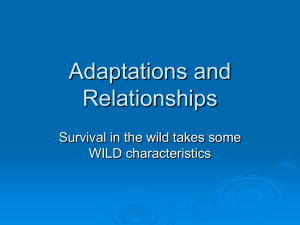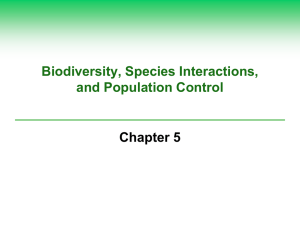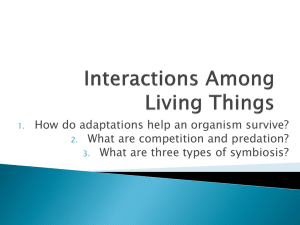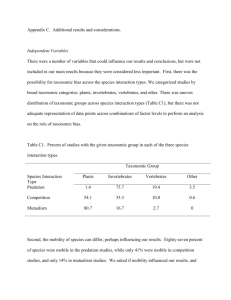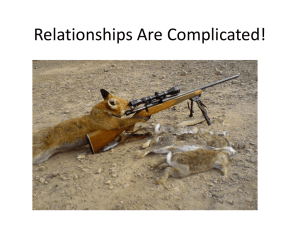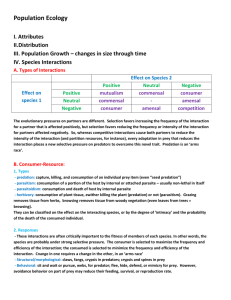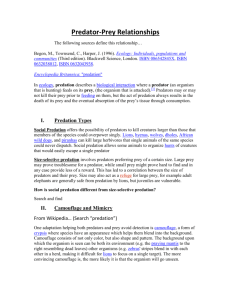Test Bank Questions for Chapter 5
advertisement
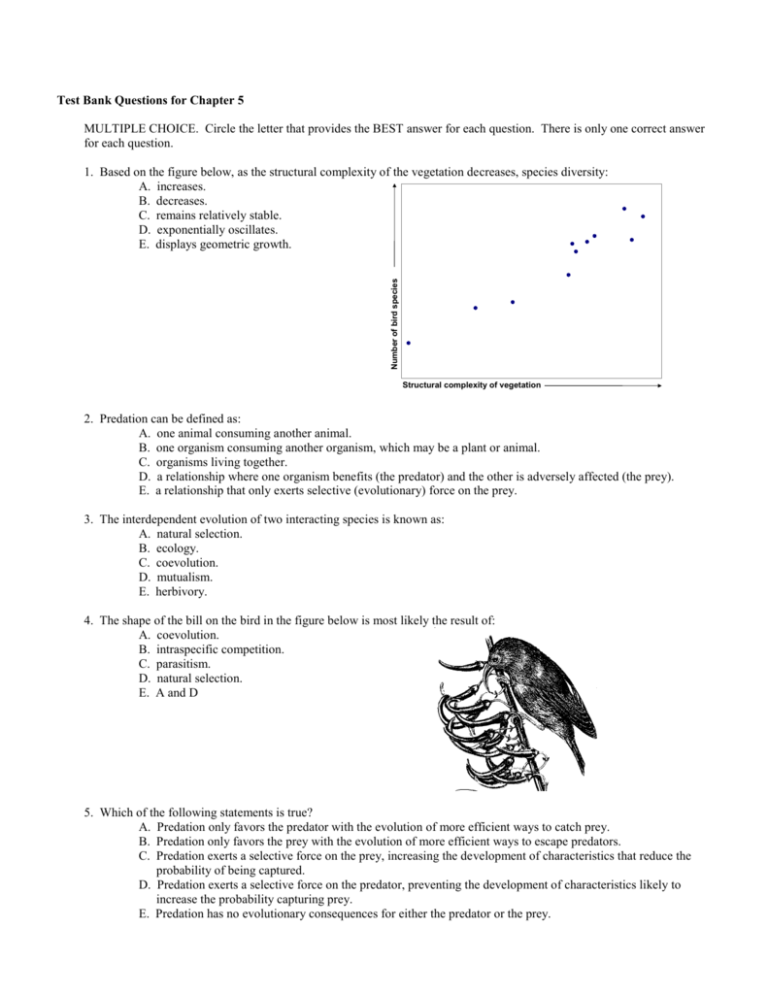
Test Bank Questions for Chapter 5 MULTIPLE CHOICE. Circle the letter that provides the BEST answer for each question. There is only one correct answer for each question. Number of bird species 1. Based on the figure below, as the structural complexity of the vegetation decreases, species diversity: A. increases. B. decreases. C. remains relatively stable. D. exponentially oscillates. E. displays geometric growth. Structural complexity of vegetation 2. Predation can be defined as: A. one animal consuming another animal. B. one organism consuming another organism, which may be a plant or animal. C. organisms living together. D. a relationship where one organism benefits (the predator) and the other is adversely affected (the prey). E. a relationship that only exerts selective (evolutionary) force on the prey. 3. The interdependent evolution of two interacting species is known as: A. natural selection. B. ecology. C. coevolution. D. mutualism. E. herbivory. 4. The shape of the bill on the bird in the figure below is most likely the result of: A. coevolution. B. intraspecific competition. C. parasitism. D. natural selection. E. A and D 5. Which of the following statements is true? A. Predation only favors the predator with the evolution of more efficient ways to catch prey. B. Predation only favors the prey with the evolution of more efficient ways to escape predators. C. Predation exerts a selective force on the prey, increasing the development of characteristics that reduce the probability of being captured. D. Predation exerts a selective force on the predator, preventing the development of characteristics likely to increase the probability capturing prey. E. Predation has no evolutionary consequences for either the predator or the prey. 6. Which of the following characterizes a symbiotic relationship? A. a close interrelationship where both species benefit B. a close interrelationship where one species benefits and the other is not affected C. a close interrelationship where one species benefits and the other is adversely affected D. an intimate relationship between members of two or more species E. All of the above 7. Which of the following defines a mutualistic relationship? A. a close interrelationship where both species benefit B. a close interrelationship where one species benefits and the other is not affected C. a close interrelationship where one species benefits and the other is adversely affected D. an intimate relationship between members of two or more species E. a predator-prey relationship 8. The relationship between legumes (such as peas and beans) and nitrogen-fixing bacteria is: A. parasitic. B. mutualistic. C. commensalistic. D. epiphytic. E. predatory. 9. The relationship between a tick and a dog is an example of: A. parasitism. B. mutualism. C. commensalism. D. an epiphytic organism and its host. E. predation. 10. In a parasitic relationship where the host contracts a disease and sometimes dies, the parasite is called a(n): A. predator. B. keystone species. C. mutualistic symbiont. D. interspecific competitor. E. pathogen. 11. Competition occurs when: A. one organism, the predator, attempts to consume another , the prey. B. two species have similar niches but occur in different habitats. C. two or more individuals attempt to use an essential common resource. D. two or more species have an ecological relationship. E. symbiotic organisms interact. Relative Population Density 12. The figure below provides support for which of the following processes? A. secondary succession 1 B. competitive exclusion C. coevolution D. mutualism E. resource partitioning Species A Species B 0.5 0 0 3 6 9 Days 12 15 18 13. The availability of which of the following is an example of a limiting factor? A. water B. nitrogen content in the soil C. nesting space D. sunlight E. All of the above 14. The most diverse ecosystem in the world is the: A. temperate forest. B. tropical rain forest. C. temperate grassland. D. desert. E. tundra. 15. Individuals within a population each have a unique combination of traits, which is known as: A. overproduction. B. evolution. C. genetic variation. D. differential reproductive success. E. natural selection. 16. The mechanism of natural selection involves all of the following EXCEPT: A. overproduction within a species. B. limits on population growth. C. genetic variation. D. differential reproductive success. E. a stable community structure. 17. Which of the following is an area where primary succession would occur? A. a sand dune along a lake shore B. an area that has been clearcut C. an area that was recently burned D. an abandoned field E. an area cleared by a tornado




